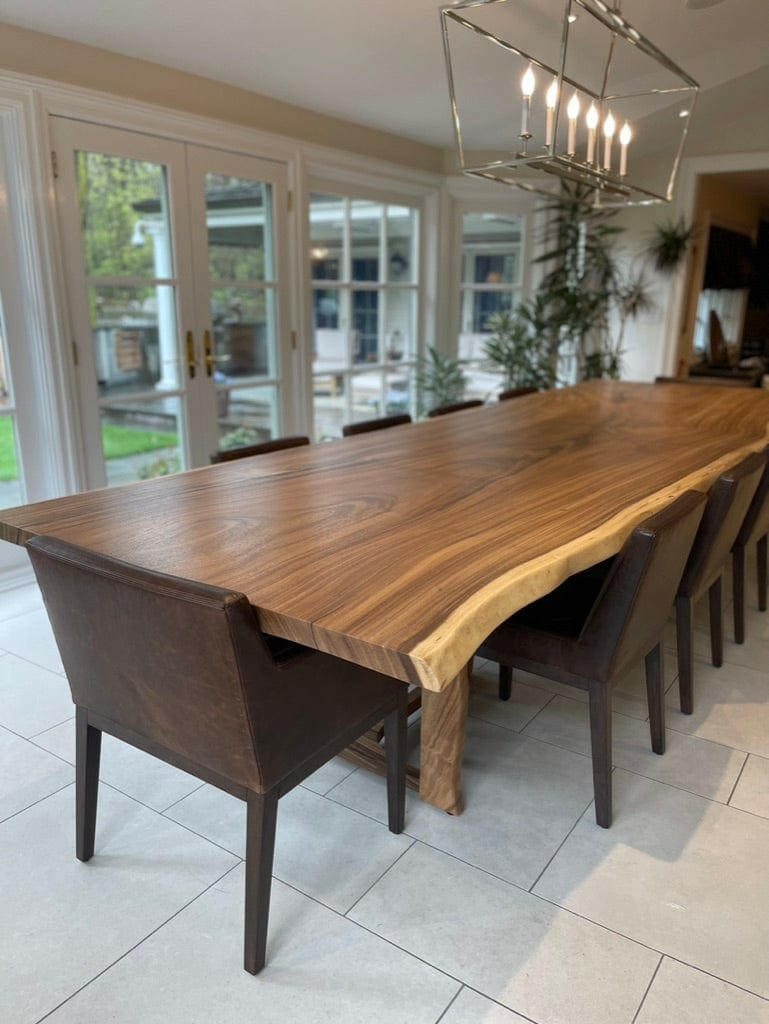Leading Patterns in Dining Room Table Legs to Raise Your Eating Area
Leading Patterns in Dining Room Table Legs to Raise Your Eating Area
Blog Article
A Detailed Appearance at Table Leg Styles: Discovering the Ideal Suit
Choosing the right eating table leg design is essential for both visual appeal and functional functionality. For those with larger tables, trestle legs guarantee sturdy support, whereas barrette legs introduce a mid-century contemporary ambiance with their minimalist style. The x-shaped legs mix modern style with improved security.
Traditional Four Legs
Among the different types of eating table leg styles, the standard four-leg layout remains a timeless choice for several houses. 4 legs supply balanced support, ensuring the table continues to be secure and qualified of bearing considerable weight (dining room table legs).
From a visual point of view, the conventional four-leg design can be easily adjusted to different interior styles. Whether crafted from timber, metal, or a combination of products, these legs can be elaborately carved, streamlined and minimalistic, or anything in between. Their convenience enables them to match both rustic and contemporary setups perfectly.
Furthermore, the uncomplicated framework of the four-leg style facilitates convenience of motion and placement within a space. Unlike even more complicated bases, this style decreases obstructions, providing adequate legroom for diners. In summary, the traditional four-leg table leg style weds enduring style with functional performance, making it an astute option for those looking for both form and feature in their dining furnishings.
Stand Base
Commonly celebrated for its classy and space-efficient design, the stand base is a distinguished option to the traditional four-leg setup in dining table leg designs. This distinct base normally features a solitary central column sustaining the table top, which can vary in kind, from ornately carved wood to sleek, modern metal. Among the primary advantages of the stand base is its ability to maximize legroom and seating versatility. Without edge legs, diners are paid for better liberty of movement, making it an excellent choice for round and oval tables that advertise even more intimate and inclusive gatherings.
Additionally, the pedestal base's main assistance can take care of significant weight, allowing for using larger table tops, such as marble or thick wood. This toughness coupled with its visual versatility makes the pedestal base a prominent selection in both typical and modern indoor setups. It can effortlessly incorporate with various layout themes, from classic elegance to minimal modernity. The central column itself offers a canvas for intricate designs and imaginative expressions, including an aspect of visual interest below the table. In summary, the pedestal base integrates functionality with style, making it an improved and practical choice for diverse eating settings.
Trestle Legs
Trestle legs supply a durable and ageless structure for eating tables, identified by their horizontal cross-bracing and tough support beam of lights. Stemming from medieval times, this style has actually developed yet preserved try this web-site its important framework, making it a perennial favorite in both conventional and contemporary setups. The central trestle beam, typically sustained by two or even more upright blog posts, uses phenomenal stability, enabling bigger table lengths without the need for added legs.
A significant benefit of trestle leg tables is the enough legroom they offer. Unlike tables with 4 edge legs, the lack of blockages at the table's edges provides unobstructed room for chairs and restaurants, boosting comfort and access. This makes trestle tables optimal for suiting bigger gatherings, whether in a dining area or a banquet hall.
The aesthetic convenience of trestle legs is notable. Readily available in a range of products such as wood, steel, and composite, they can be ended up to enhance a large range of indoor designs. From rustic farmhouse to streamlined modern-day layouts, trestle legs can be customized to fit individual preferences. Their enduring allure and practical benefits make trestle legs an engaging option for those looking for both style and practicality in their eating table.
Hairpin Legs

The appeal of hairpin legs hinges on their simpleness and adaptability - dining room table legs. Readily available in a series of products, including steel and brass, they can be ended up in numerous colors to match various interior designs. Whether coupled with a rustic wood tabletop or a contemporary glass surface area, hairpin legs effortlessly blend performance with a touch of vintage beauty
Longevity is an additional noteworthy attribute of hairpin legs. Despite their delicate look, these legs are engineered to bear substantial weight, making certain the table stays steady and protected. Additionally, they are fairly easy to set up, making them a prominent option for DIY check here enthusiasts and professional furnishings manufacturers alike.
X-Shaped Legs

Built from products such as steel, wood, or a mix of both, X-shaped legs can be customized to match different layout preferences. Steel legs often provide a smooth and commercial feel, perfect for loft-style apartments and contemporary eating spaces. On the other hand, wood X-shaped legs provide a warmer, extra rustic appeal, appropriate for farmhouse or diverse interiors. The adaptability in products allows property owners to tailor their table to better fit their general layout system.
Furthermore, the engineering behind X-shaped legs makes sure also weight circulation, decreasing the risk of tottering and enhancing resilience. This makes them especially appropriate for bigger dining tables that require additional support. In essence, X-shaped legs blend useful engineering with contemporary aesthetics, making them a timeless choice for diverse dining environments.
Conclusion
A comprehensive understanding of eating table leg styles exposes the unique characteristics and advantages of each design. Trestle legs make sure robust assistance for bigger tables, and hairpin legs present a mid-century modern-day visual.
Report this page